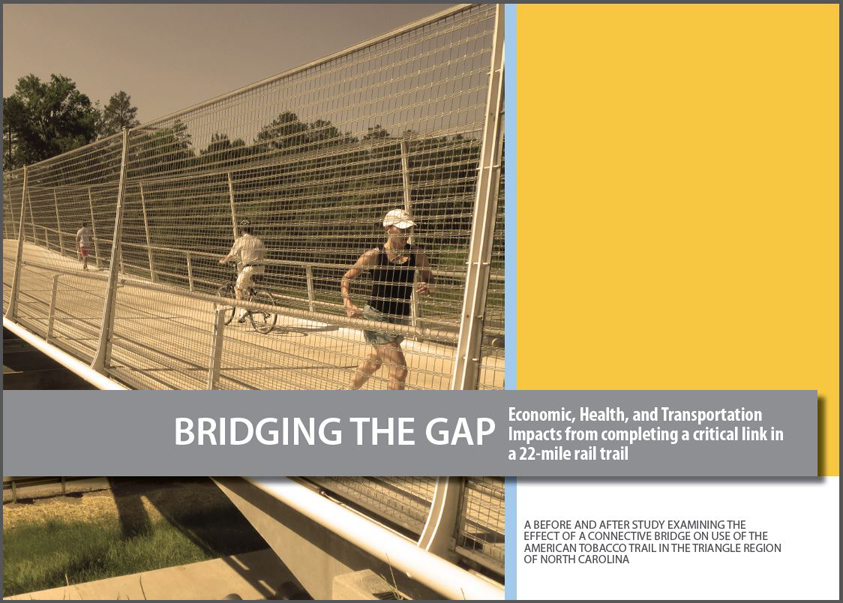The construction of the bridge over Interstate 40 and corresponding paved connections joined the two unconnected trail segments of the American Tobacco Trail (ATT) forming a continuous 22-mile shared use path corridor. Data collected before and after the addition of the bridge segment were compared to determine changes. ITRE found that use of the trail increased 133% and additional $3.7 million is spent annually on goods and services by those using the trail. The research also portrayed exceptional gains in the amount of physical activity and economic impact measured by people using the trail, occurring just three short months after the opening of the bridge.
This ITRE led study provides empirical evidence that constructing bicycle and pedestrian facilities, particularly those that fill a critical link in non-motorized transportation network, will result in measurable positive impacts.
Project Resources
Paper: Behavioral Effects of Completing a Critical Link in the American Tobacco Trail
Contact
Sarah Searcy
Bicycle & Pedestrian Program Manager
(919) 515-8703 | sesearcy@ncsu.edu
Blythe Carter Geiger
Research Associate
(919) 515-8751 | bacarte2@ncsu.edu
